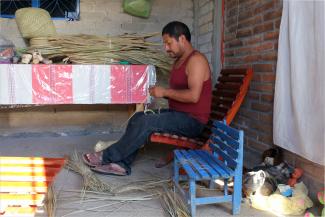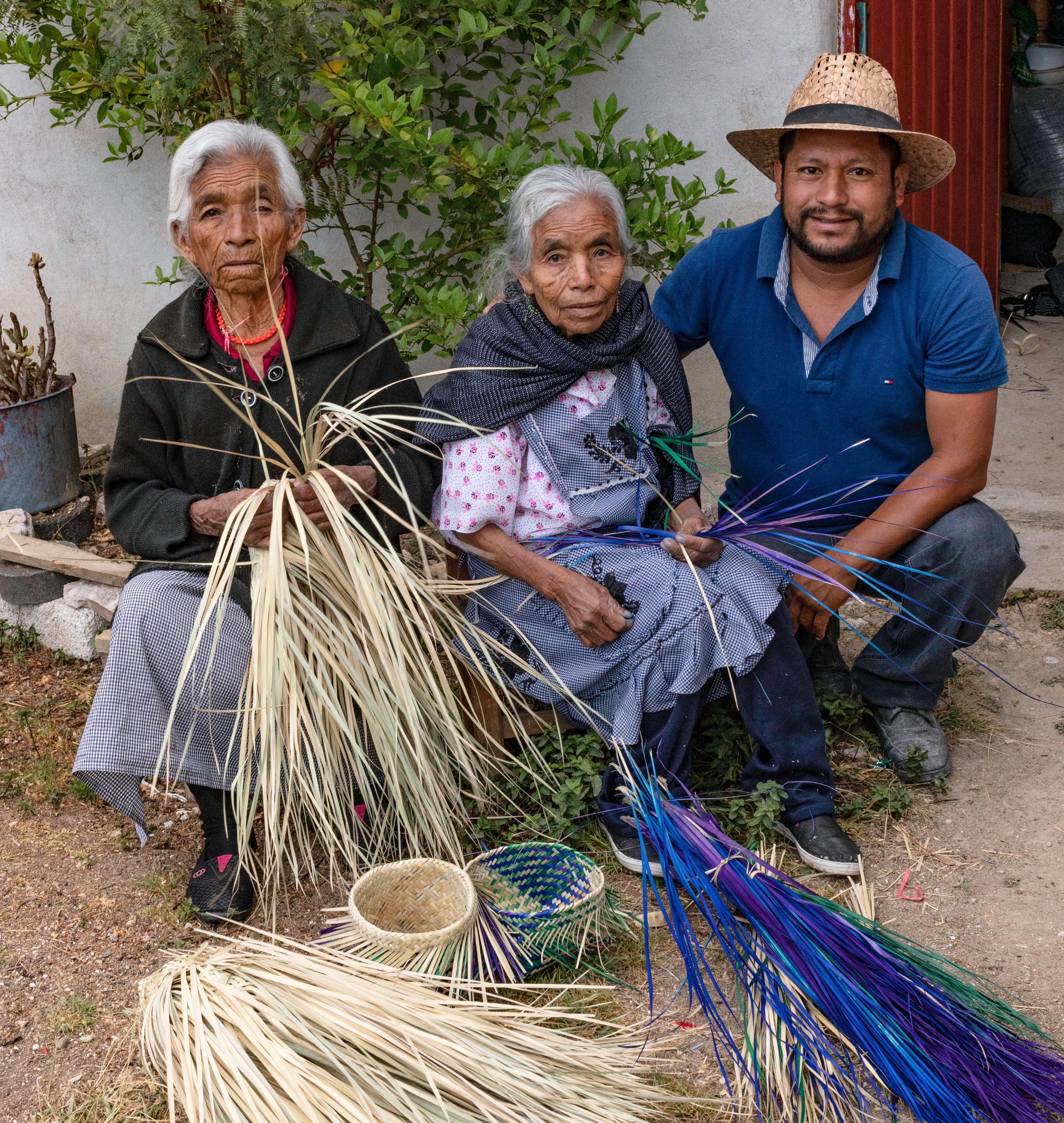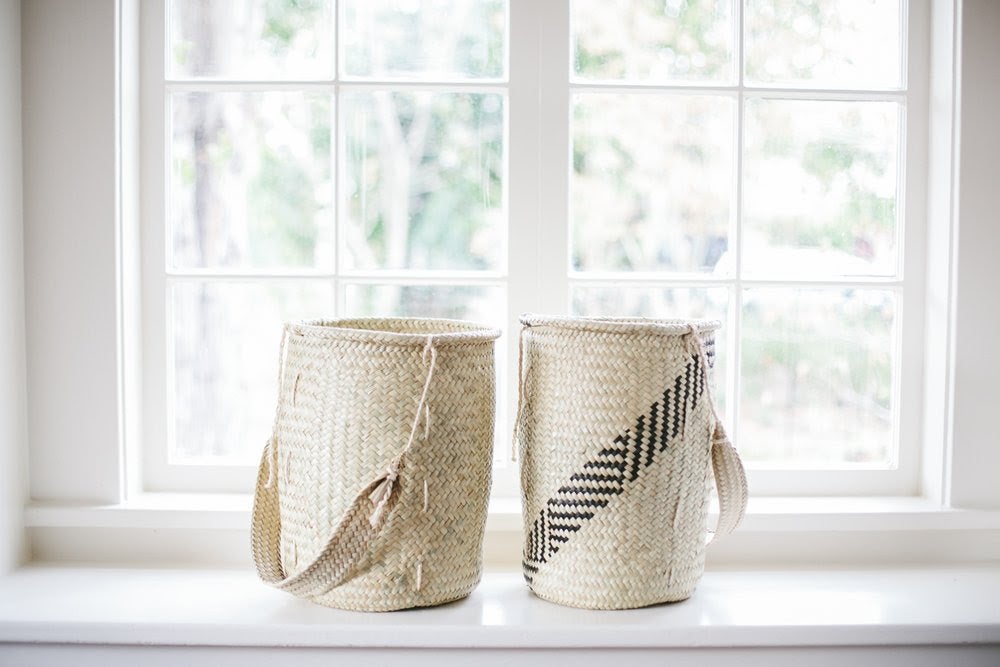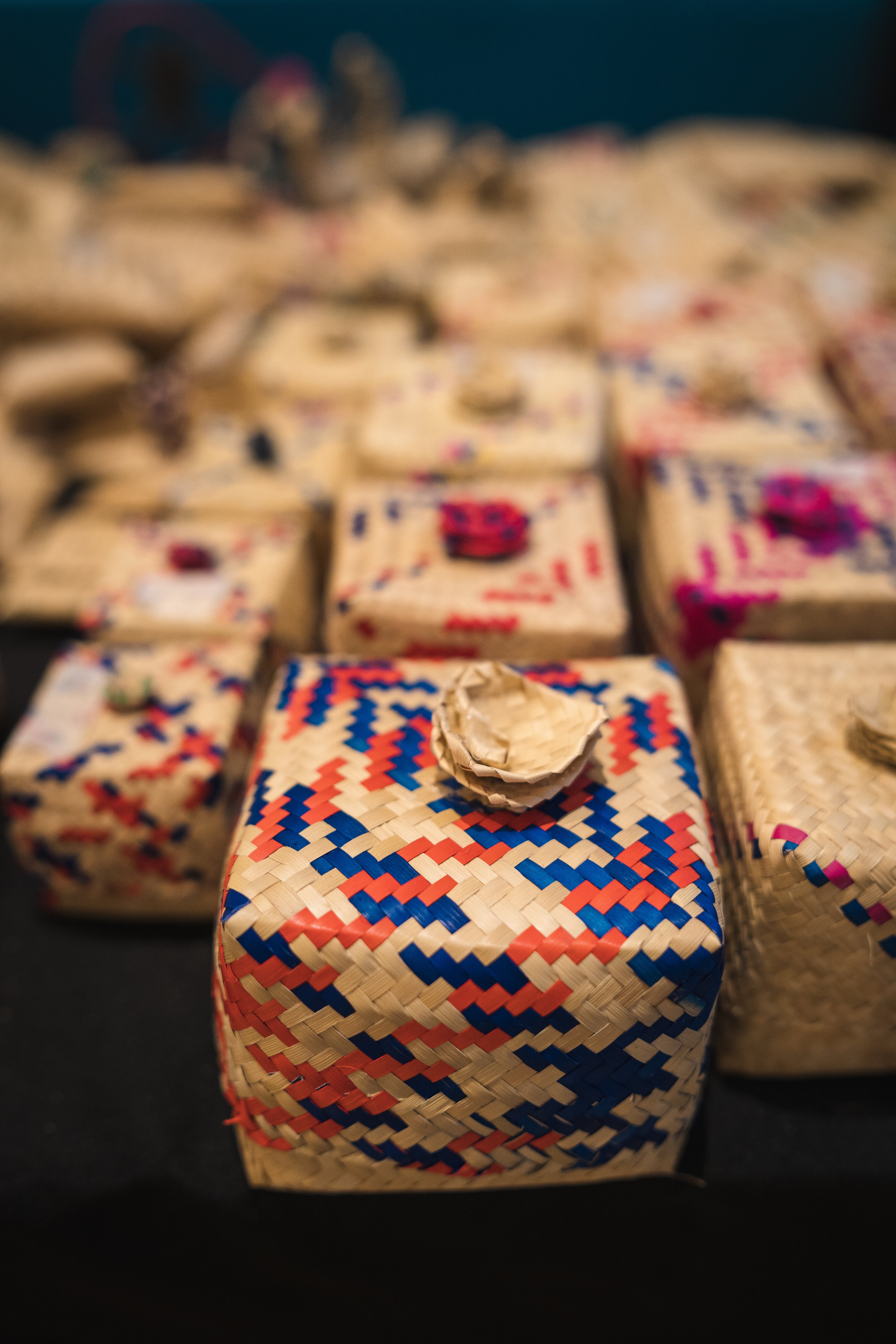
Juan García Mendoza is a Mixtec artisan from San Pedro Jocotipac, Oaxaca, Mexico. His community is known for their skills in transforming native palm into products used in everyday life such as hats, sleeping mats, and baskets. He is also the founder and owner of Arte Palma, which started operations in 2010. In the beginning, García manufactured products only for local sale. But he has since diversified his products, and today he sells hats, handbags, earrings, wallets, rugs, and decorative products in international markets.
Describing his process, García says, “The palm plant requires a special drying process; the drying time carefully designed to preserve the plant’s natural color, which ranges from green, light brown, dark brown, and yellow tones. The sheets of palm are saved, sorted, and the strips that are to be used are selected so that they can be used. Once the pieces are finished, each one is treated with steam to make them flexible and resistant.” He explains that the process to make a piece “begins when you start to collect the palm in the field, dry it in the sun for an average of four to five days, prepare it in rolls, clean the palm, and finally weave it.” A completed piece takes an average of one week.

García says he learned to weave palm from his parents. “I started weaving when I was eight years old. In the beginning we sold baskets. Now we have expanded to gift boxes, chairs, and decorative products that have leather details.” In addition to the products of his family and the community of San Pedro Jocotipac, Arte Palma also sells the work of other artists from the nearby communities of Santa María Texcatitlan and Nodon, and has recently begun to market natural and organic products.
“As a master craftsman I have done demonstrations of my work so that other people know a little more about what is behind the works of art. It is one of the most beautiful experiences I have had during these years of work as an artist,” García says. “I have also done collaborative projects with the Textile Museum of Oaxaca and with Mexican designers. And I have been an instructor in weaving workshops with palm and cordon in the Textile Museum of Oaxaca, in Mexico City, and in the Tecnológico de Monterrey in Nuevo León.”

García works hard to make sure artists get a fair price for their work. “Thanks to Arte Palma, artisans find prices that recognize the time and work that is invested in the creation of the products,” he says. As part of its social responsibility, Arte Palma generates sources of employment for the elderly in the community who are dedicated to the preparation of the Mecca thread, the main raw material that is used in rustic furniture that has opened them to new markets such as restaurants and hotels.
Speaking about challenges artists face, García says, “In my region, marginalization is a problem. There is not appreciation for our work.” Another major problem is the replacement of palm by plastic. “These products are displacing palm because it is much easier to process and the final product is much cheaper,” he says. But he also considers that being an Indigenous artisan and selling his own products has an advantage, because he can explain the entire process of creating each product.

García has participated in three Cultural Survival Bazaars so far: “Bazaars offer many opportunities for artists. Being part of the Bazaars has helped me achieve my dream, to build my own workshop at home. Also I have been able to travel and see other cities.” He also runs workshops focused on transmitting the craft to younger generations. “These products have to be innovative so that young people continue to use these handicrafts and they do not fall into disuse,” he says.
Meet Juan García Mendoza and see his work at our upcoming Cultural Survival Bazaars:
July 20-21: Newburyport, MA
July 27-28: Tiverton, RI
To learn more, visit: bazaar.cs.org
Top two photos by Erik Tlaseca.
